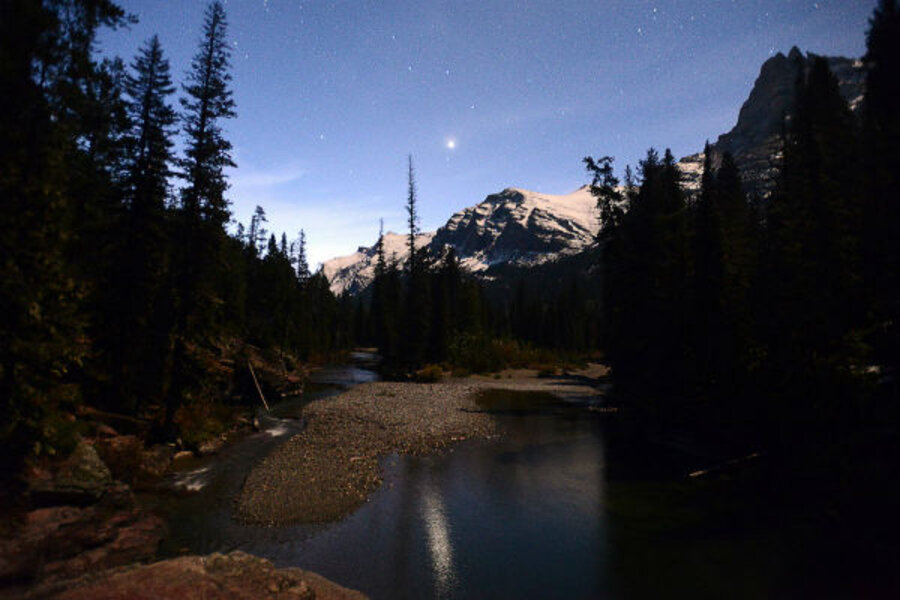Montana hikers found as one mom and son learn hiking Rule 1
Loading...
| Norfolk, Virg.
On Sunday, Quin, eight, ran ahead on a state park trail and wasn’t at the end waiting for us when we arrived and thoughts of the two adult hikers, from Virginia, lost in a Montana's Glacier National Park sprang to mind. In the 90-minutes it took to find our son, I repeatedly wished we’d taken precautions beyond bug spray and a restroom break, before we embarked on the trip. We'd taught him self-reliance, but learned later we should have taught him enough faith in us to stay put and wait to be found.
RELATED: Are you a helicopter parent? Take our quiz!
Come Monday, the parents of Neal Peckens, 32, Herndon, Va., and Jason Hiser, of Richmond, Va., who had been missing for more than three days in Glacier, were reunited with their families. I thought about the moms waiting at the airport to greet their adult children and wondered if they too had spent time regretting not having taught them more.
We went to the Sandy Run Regional Park at Lake Occoquan in Lorton, Va. to root for our eldest son as he rowed for Virginia Commonwealth University, in the Occoquan Chase event. The trail seemed so simple, to an adult, that when my husband and I headed for the outdoor stadium, and I had fell behind, my husband stopped to wait for me. He told Quinny to go on ahead to the outdoor stadium ahead.
Later, there would be much discussion on this point of order. Moms hold on and dads push little boys to greater deeds, but this was the wrong time and place to do the latter.
The trail would split ahead and Quin had never been told to follow the water and so he followed his spirit of adventure instead. He’s a little boy and a trail that goes steeply up is more fun than a flat trail ahead because it means that later you can zoom down a big “mountain.” Kid logic often trumps parent logic by a country mile and about 90-minutes. It takes no time for a child to get lost in the woods, but every minute the child is missing feels like a lifetime.
We hadn’t thought to do any of the things I would later learn from Kathy Kupper, a spokesperson for the National Parks Service in Washington, D.C. are mission-critical for families heading into any regional, state, or national park.
“Before you arrive at the park give young child a whistle to wear around the neck, make sure they have a granola bar and a little bottle of water in their pockets,” she told me. “Drum it into them that Rule 1 is: stop and wait to be found.” This, she emphasized, goes for adults too.
“The moment you realize you’ve gone wrong and might be lost, sit down on the spot and wait,” she said. “Don’t go on getting more lost and don’t try and retrace. Just stay put.”
Only in cases where you are lost deep in the woods with no trail should you try to follow water to civilization. That’s extreme lost for hikers vs. lost kid on a maze of trails.
The battle parents face is that this thinking flies in the face of all things kid. When you’re afraid, you want to get to help faster. “Wait” is to a lost 8-year-old, as “don’t panic” is to a parent who has just absorbed the reality that the child is not appearing as time evaporates.
Ms. Kupper warned, “I don’t like to scare people, but when a child is lost they start running and it’s just too easy to slip and become fatally injured by falling down steep inclines or into water.”
So we must impress upon those we love that they have to have faith and trust.
“You have to let people find you,” Kupper said. “You have to trust the seekers. Rangers will find you faster and easier if you stay put.”
She added that one of the things that can work against children who have been taught about stranger danger is to ask a passing adult for help. Our son actually ran across an adult who asked, “Are you all alone here?” Quin, fearing telling a stranger he was alone and vulnerable, said, “My Papa’s right down the trail there.”
Fortunately, this was one of the times his having Autism Spectrum Aspergers Syndrome may have played a small role in helping him get found because he went into logic mode instead of panicking and getting off the trail. Having a very good memory, he carefully retraced his steps, counting turns, ups and downs until he got far enough back that he met my haggard husband on the trail. However, as we all know now, had he stayed in one spot and waited, the find would have been much faster.
No matter what age our children are when they go missing we, as parents, feel we should have done more, been better to prevent it. In this case at least there is a bit more nagging we can do to help.
The Christian Science Monitor has assembled a diverse group of the best family and parenting bloggers out there. Our contributing and guest bloggers are not employed or directed by the Monitor, and the views expressed are the bloggers' own, as is responsibility for the content of their blogs.








